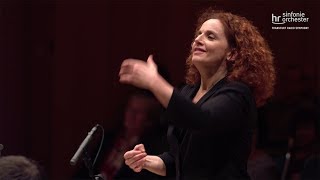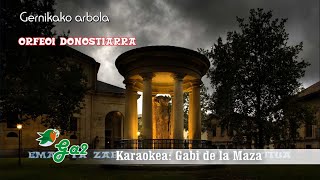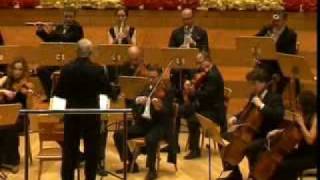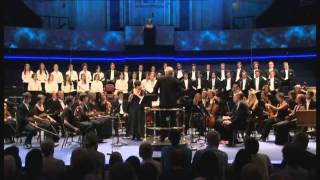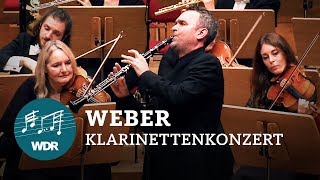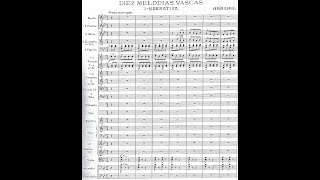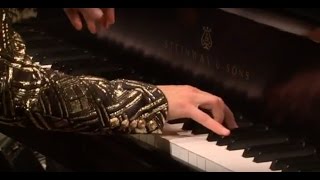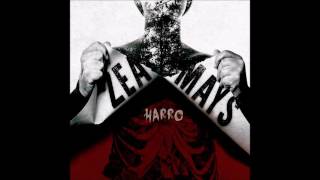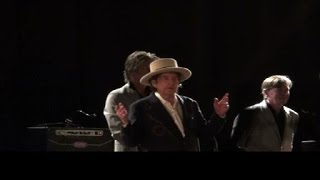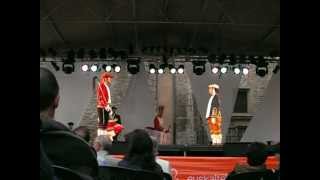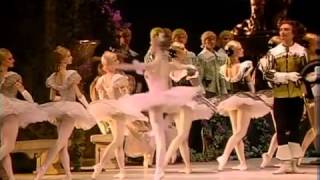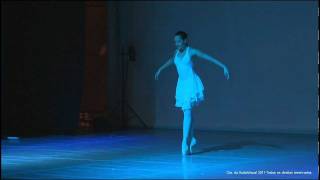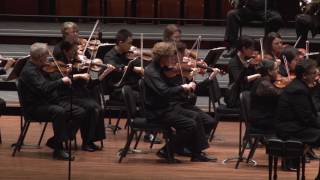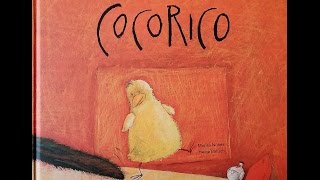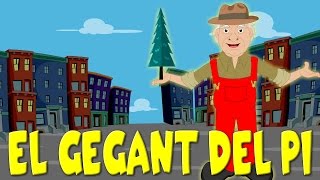On April 9, the Catholic Church celebrates Resurrection Sunday.
On Easter Sunday, the Basque People celebrate Aberri Eguna (Day of the Basque Nation)
On April 14, 1931, the second Spanish Republic was proclaimed.
Recommended music videos for initiation to classical music
Georg Friedrich Handel ( 1685-1759) born in Halle , Germany , is one of the leading figures in the History of Music and, of course, of the Baroque (1600-1750). He wrote numerous operas, cantatas and oratorios, among which we must highlight his masterpiece, the Oratorio El Mesías . At the age of 18 he moved to Hamburg where he joined the Opera Orchestra . After three years he traveled to Florence and then to Rome . In 1710 he returned to Germany and from there to London where he settled under the tutelage of different patrons. Although he was always very jealous of his private life, there are innumerable indications that make us assume his homosexual inclination. In London he acquired his British nationality and was appointed manager of the Opera House until his death in 1759.
Handel's Alleluia belongs to the end of the second part of the Oratorio The Messiah based on an extended reflection on Jesus of Nazareth as the Messiah called Christ . The three-part structure of the work approximates that of Handel 's three-act operas, with the "parts" subdivided into scenes, each scene being a collection of individual numbers taking the form of recitatives, arias, and choruses. The second part focuses on the Passion, Death and Resurrection of Christ and ends precisely with the " Alleluia " choir that we offer today, conducted by Emmanuelle Haïm (1962), harpsichordist and conductor specializing in baroque music, who has had relevant performances at the helm of the Berlin Philharmonic, the Chicago Opera or the BBC Proms .
The Aberri Eguna ("Fatherland Day" in Basque, referring to the Basque homeland) is a festive celebration of right-wing and left-wing Basque nationalism that is convened annually on Easter Sunday . This celebration, created by the Basque Nationalist Party in 1932, is celebrated throughout the Basque Country (autonomous communities of Euskadi , Navarra and the Basque Country in France ), as well as by the Basque diaspora spread throughout the world. The first celebration was held in Bilbao in 1932; It was banned after the Spanish Civil War in 1936 and began to be held again in 1964.
José María Iparragirre (Urretxu, Gipuzkoa, 1820-1881) was a well-known bertsolari (verse improviser) and popular musician, who led a bohemian and adventurous life; hence his nickname of the Basque bard , an image that he supported with an inseparable guitar and the improvisation of songs and bertsos. His work, mostly written in Basque , includes some of the most significant and popular songs from the Basque Country . Considered by the authorities of his time as a dangerous "agitator of the masses", he suffered prison and exile, lived for 19 years in Argentina and Uruguay , and on his return he earned a living with the recitals he gave throughout the Basque Country . He died of pneumonia in his hometown of Urretxu , where he is buried.
The Gernika tree is a specimen of oak ( Quercus robur ) located in front of the Casa de Juntas in the Biscayne town of Gernika . This tree symbolizes the traditional freedoms of Bizkaia and by extension those of the entire Basque People .
Gernikako arbola , the best-known song by Iparragirre , is a zortziko in homage to the Tree of Gernika and the Basque privileges it represents. The song was premiered at the Café de San Luis in Madrid in 1853, accompanied on piano by maestro Juan María Blas de Altuna . The zortziko was repeated over and over again among the most spontaneous bravos and applause; That same night all the Basques who attended the memorable evening memorized it, and at the last minute the Gernikako arbola was sung in chorus by fifty, sixty or more voices, while Iparraguirre and Altuna were the object of a true ovation.
Hymn of Riego is the name given to the hymn that the flying column of Lieutenant Colonel Rafael del Riego sang after his insurrection against the King of Spain Fernando VII on January 1, 1820 in Las Cabezas de San Juan (Seville province). , whose text is by Evaristo Fernández de San Miguel and music by an unknown author, although some version attributes authorship to José Melchor Gomis . It was used as the national anthem of Spain during the Liberal Triennium (1820-1823), the First Republic (1873-1874) and the Second Republic (1931-1939), which even in exile maintained its use until its own dissolution. The version that we offer today is offered by the Prague International Orchestra .
Nana Mouskouri (in Greek Νάνα Μούσχουρηe, 1934) is a Greek singer-songwriter, particular for being one of the best-selling soloists in history, with more than 300 million records, cassettes and CDs.
In 1959 the triumphs for Nana began, thanks to her experiences with different musical genres ( Pop, Jazz, Folkloric, Classical, Gospel , etc.). He obtained numerous and important national and international awards becoming a world celebrity, with songs in Greek, English, French, Spanish, Italian, Latin, German, Hebrew and Japanese. She publicly disapproved of the Greek military dictatorship and supported democracy until its restoration in 1974. Her love for children led her to become a UNICEF ambassador in 1993, and then to represent Greece in the European Parliament in 1994.
The Va pensiero choir that we offer today belongs to the third act of the opera Nabucco , for many critics Verdi 's masterpiece. It is the Chorus of Hebrew Slaves captured by Nebuchadnezzar and taken to Babylon where they melancholy remember the happy days they enjoyed freedom in their native country. And it was precisely this choir that the Italian patriots anxious for the unity and sovereignty of Italy sang when it was dominated by the Austrian Empire and it is this, too, the choir that Nana Mouskouri sings to us today in a version adapted to its characteristics. .
Recommended classical music videos
Johann Sebastian Bach (1685-1750) was a German violinist, organist, conductor, and composer, born in Eisenach into the most prominent musical family in history. In 1703 he got his first job in Arndstat and in 1707 he moved to Mülhausen as an organist, where he married his cousin Maria Barbara with whom he had seven children. After the death of his wife in 1720, he remarried Maria Magdalena with whom he would have another thirteen children. In 1723 he moved to Leipzig where he would reside until his death at the age of 65. Considered one of the three main geniuses in the History of Music along with Mozart and Beethoven, his influence has been notable on Haydn , Mozart , Beethoven , Mendelssohn , Schumann , Chopin ... and many other renowned composers.
The Easter Oratorio , BWV 249 is an oratorio written by Johann Sebastian Bach , the first version of which was completed as a cantata for Easter Sunday in Leipzig , on April 1, 1725, under the title Kommt, gehet und eilet . It was given the character of an oratorio and a new title in a revision of 1735. In a later version from the late 1740s, the third movement was expanded from a duet to a four-part chorale. Unlike the Christmas Oratorio , it does not have a narrator, but four characters assigned to each of the voices: Simon Peter (tenor) and John the Apostle (bass), appear in the first duet hurrying towards the tomb of Jesus , which they find empty. There they find María Magdalena (alto) and "the other María", María de Cleofás (soprano).
Carl Maria von Weber (1786-1826) was a German composer. From a very young age he learned to sing and play the piano and at the age of 12 received free lessons in Salzburg from Michael Haydn , brother of Joseph Haydn . In 1812 his father died and the following year he was appointed conductor of the Prague Orchestra and later of the Dresden Orchestra, while working on his most famous opera Der Freischütz (The Poacher); He also composed two other operas Euryanthe and Oberon ; the three operas are considered by many critics as masterpieces of the scenic genre. In addition to other operas, he composed numerous songs, piano works, chamber works, two symphonies, several overtures, concertos and concertante works for different instruments, three masses and eight cantatas.
The clarinet is a musical instrument of the family of woodwind instruments with a single reed (the oboe and bassoon use double reeds). Within the orchestra, he is in the woodwind section, along with the flute, oboe, saxophone and bassoon. The timbre of the clarinet is rich in nuances and expressive possibilities. Along with the flute and the violin, it is the most agile instrument in the orchestra; it can emit any extreme nuance in any of its registers, making this instrument an extremely versatile voice.
Parts of the clarinet . Mouthpiece : it is the piece where the reed is placed and the instrumentalist places the mouth to make the embouchure. The reed is a thin strip of material (usually wood) that thanks to the wind that is produced when the instrumentalist blows, the reed vibrates producing a sound in the instrument. Barrel : it is the element that articulates the mouthpiece with the upper body of the instrument. Upper body : it is where the left hand is placed when playing and it has part of the instrument's mechanism. Lower body : it is where the right hand is placed when playing and it has part of the instrument's mechanism. Bell : Located in the lower part and fulfills an acoustic function that allows the projection of sound during the performance
Jesús Guridi (1886-1961) was born in Vitoria-Gazteiz into a musical family. After the family moved to Madrid , Guridi entered the Conservatory ; However, the economy did not go well for the parents, so they moved to Bilbao , where thanks to the patron, the Count of Zubiría , he was able to move to Paris and enter the Schola Cantorum to study piano, organ, counterpoint and composition. After finishing his studies, he went through Belgium , Cologne and Munich to deepen them. Back in Bilbao , at the age of 21, he took over as director of the Bilbao Choral Society , a job that he combined with that of organist in the Basilica (now the Cathedral) of Santiago . In 1939 he returned to Madrid , as director of the Conservatory , where he would die at the age of 75.
The work Ten Basque Melodies was premiered on December 12, 1941, at the Cine Monumental in Madrid , by the Madrid Symphony Orchestra conducted by Enrique Jordá ; its ten melodies are: I (0´33´´) NARRATIVE .-. II (1´55´´) LOVING .-. III RELIGIOUS (4´32´´) .-. IV (7´07´´) EPITHALAMIC .-. F (8´20´´) OF ROUND .-. VI (9´22´´) LOVING .-. ROUND VII (13´16´´) .-. VIII (14´40´´) DANCE .-. IX (16´58´´) ELEGIAC .-. X (19´47´´) FESTIVE. Today we can listen to it in a version by the Euskadi Symphony Orchestra under the conduction of the Granada maestro Miguel Ángel Gómez Martínez
George Gershwin (1898-1937) was an American composer appreciated for having known how to combine jazz with classical music . From a young age he began to write his first songs, premiering his first musical on Broadway with his brother Ira as lyricist, a company he would never leave. From the age of twenty he began to compose, works designed for concert halls with which he obtained renowned successes. Aware of his formal deficits, he traveled to Paris to complete his training with Stravinsky , who, after asking him about the money earned in a year, replied that he was the one who should take classes with Gershwin . Something similar happened with Ravel , because he blurted out that "Why do you want to be a second-rate Ravel , when you can be a first-rate Gershwin ?"
La Rhapsody in Blue , a work that we are presenting today, was initially written for solo piano and jazz band and arranged for piano and symphony orchestra in 1946 by Ferde Grofé (1892-1972), which is the version that is usually offered. The work aroused some controversy at its premiere; but in a short time his freshness and imagination prevailed, occupying one of the first positions of preference among the best pianists and orchestras.
Lola Astanova (1982), our soloist today, is a pianist born in Uzbekistan . At the age of eight he was already touring as a soloist, astonishing audiences in half of Europe with his technique and childlike imagination. She has performed in the best venues in the world both alone and under the baton of the main orchestra conductors.
Recommended music videos for all tastes
Zea Mays is a rock band that emerged in Bilbao in 1997, made up of Asier Basabe (drums), Rubén González (bass), Iñaki Imaz (guitar) and Aiora Renteria (singer). In 1997 they recorded a demo, with which they won the Youth Model Contest of the Basque Country . The award gave them a great boost and thanks to it they programmed several concerts throughout the Basque Country . In 1998, they were considered the best Basque band in the Bilbao pop-rock contest . In 1998 they recorded their first album, the self-titled Zea Mays , which would be followed in successive years by Elektrizitatea , Harrobian , Sortuz, grabitatearen aurka while on various tours of Germany and the Netherlands . In 2007, already with ten years of experience, they launched the new work Morphina ; then Era Da and Harro would come, which we offer today.
Dianne Reeves , ( Detroit 1956) is considered one of the most important female jazz singers of our time. Discovered by Clark Terry , she has sung with the trumpeter while still at the University of Colorado . In California , he records with Lenny White, Stanley Turrentine, Alphonso Johnson, and The Latin Ensemble . Between 1978 and 1980, he meets Billy Childs and begins an artistic relationship that will last ten years. He works with the group Night Flight, Sergio Mendes and with the composer Phil Moore and other renowned artists. He releases successful albums and tours throughout the United States and Asia that are highly regarded by jazz connoisseurs and audiences. Currently, she is established as one of the most qualified voices in the world of contemporary vocal jazz .
Julien Doré (1982) is a French actor, composer and singer, winner of the 2007 Nouvelle Star television show, from which he has had a successful musical career with three studio albums, Ersatz (2008), Bichon (2011) and Løve (2013), all reaching the top four spots on the Official French Albums Chart. He has also had hits in Belgium and Switzerland . In 2009, Doré recorded the song Helsinki with the French singer Mélanie Pain ; he also collaborated with French singer Sylvie Vartan on her 2010 album release, Soleil bleu .
Bob Dylan (1941) is an American musician, songwriter, singer, and poet, widely regarded as one of the most prolific and influential figures in 20th and early 21st century popular music. Throughout his career he explored the American musical tradition with folk, blues, country, gospel, rock and roll and rockabilly , as well as English, Scottish and Irish folk music , including jazz and jazz. swing . His albums have won him several Grammys , Golden Globes and Academy Awards , while the lyrics of his songs incorporate a variety of social, political, philosophical and literary themes.
In January 1990, he was invested as a Knight of the French Order of Arts and Letters ; in 1999, he was named to Time magazine's list of the hundred most influential people of the 20th century ; in 2000, he won the Royal Swedish Academy of Music's Polar Music Prize and in 2004 he reached second place on Rolling Stone's list of the hundred greatest artists of all time, after The Beatles . In May 2012, he received the US Presidential Medal of Freedom and in 2016, the Nobel Prize for Literature .
Recommended peculiar videos
Godalet Dantza together with the Bralea jump dance, is the most important performance of the masquerades (carnivals) of Zuberoa (Soule, in French); it is said that it was the people of Barkoxe who created this dance. Formerly the Zuberoa masquerades were held in the morning; After the performance, the actors of the masquerades would meet in the town square to enjoy the food they had been given throughout the morning. Our elders assure us that it was during those meetings when the Godalet Dantza was created. As a game, one of the young people began to dance around a glass or godalet and danced the steps of the dance they knew. The other dantzaris followed him and, in this way, the game became a dance and ended up spreading throughout Zuberoa . (Extracted from Auñamendi Eusko Entziklopedia)
Elai Alai Dantza Taldea is a Basque dance group born in Portugalete , Bizkaia, in 1962; since then the personality and prestige of the group have been consolidated inside and outside the borders of the Basque Country , thanks to a quiet but constant work of recovery, conservation and expansion of the rich Basque folklore. Today he offers us this careful choreography of Godalet Dantza .
The Russian composer Pyotr Tchaikovsky (1840-1893) was a Russian composer who graduated from the Saint Petersburg Conservatory and wrote works of different genres, although he achieved his greatest success with his ballets. In 1859 he obtained a position as a civil servant in the Ministry of Justice , which he would abandon at the age of three to be able to dedicate himself solely to music. His personal life was plagued by continuous crises since the death of his mother and his repressed homosexuality, which forced him into a marriage that only lasted a few months. He wrote more than 150 compositions, including piano works, quartets, suites, symphonies, concertos, chorales, cantatas, operas, and ballets. He died at the age of 53 and is considered one of the greatest composers in history.
Sleeping Beauty , one of the most performed ballets in the classical repertoire, is a fairy tale/ballet structured in a prologue and three acts, whose music was written by Tchaikovsky in 1889 with choreography by Marius Petipa and a libretto by Ivan Vsevolozhsky and Petipa himself. ; The plot was based on the story The Sleeping Beauty of the Forest , which is a young princess condemned to sleep forever until true love comes into her life. Today we offer the entire ballet performed by the Mariinsky Theater Ballet and Orchestra.
Claude Debussy (1862-1918) was a French composer considered to be the first composer of Impressionism . In 1884, with the cantata L'enfant prodigue, he won France 's most prestigious musical award, the Prix de Rome . Back in Paris , he was impressed by Wagner 's opera Tristan and Isolde , “the best I have ever heard”. Later he would be influenced by the structures of Javanese music, by the harmonic freedom of Rimski-Korsakov and by Erik Satie , similar to his approaches. In 1894 he premiered his Prélude à l'après-midi d'un faune ; four years later is when he achieved his international fame with his only finished opera Pelléas et Mélisande ; he was then 37 years old. Today Debussy is considered one of the most important composers of the 20th century .
Clair de lune (in English, Moonlight ) is the third movement of the Bergamasque Suite that Debussy wrote for piano in 1890, although the work was not published until 1905. The movement, the best known of this suite, is expressed with a tempo andante trés expressif (very expressive andante) and whose predominant dynamics in almost the entire work is the pianissimo , although in its harmonic climax it goes to the forte . Its formal structure distinguishes four sections: Introduction, development, harmonic climax and restatement . Today we offer a version for harp and chamber orchestra choreographed by Magaly Bueno .
PDQ Bach is a fictional composer invented by American musical satirist Peter Schickele , who built a five-decade career performing the "discovered" works of the Bach family's "only forgotten son". Schickele 's music combines parodies of musicological scholarship, the conventions of classical and baroque music, and slapstick comedy. The name PDQ is a parody of the three-part names given to some members of the Bach family that are commonly reduced to initials, such as CPE for Carl Philipp Emanuel Bach ; PDQ is an acronym for Pretty Damned Quick .
Peter Schickele began working on the character while studying at the Aspen Music Festival and School and Juilliard and has done a variety of PDQ Bach programs over the years. The weekly The Village Voice mentions the juxtaposition of collage, bitonality, musical satire and orchestral surrealism in a "strange melodic stream of consciousness [...] In PDQ Bach has mapped a musical universe that everyone knew was there and that no one else had the guts (not simply the bad taste) to explore." As of 2012, Schickele had declined touring due to age. He held two concerts to commemorate the 50th anniversary of his first concert at The Town Hall in New York on December 28 and 29, 2015 and continues to offer live concerts.
Recommended music videos for children
Various Wikipedia articles have been used to write these texts.
The texts of Videomusicalis are written in Basque, Spanish and English.





